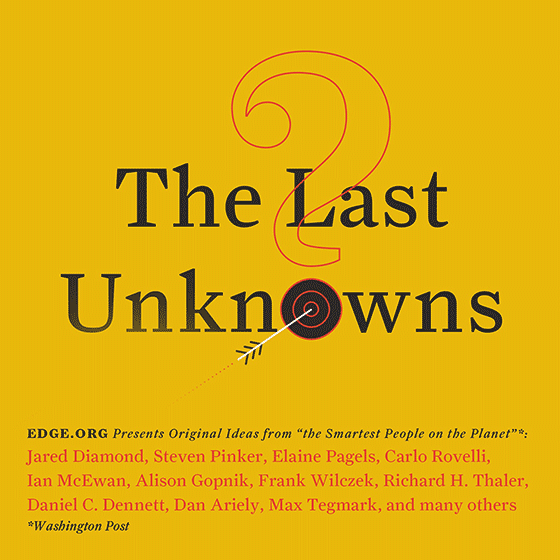SCIENCE SALON # 69
Dr. Barbara Tversky — Mind in Motion: How Action Shapes Thought
An eminent psychologist offers a major new theory of human cognition: movement, not language, is the foundation of thought.
When we try to think about how we think, we can’t help but think of words. Indeed, some have called language the stuff of thought. But pictures are remembered far better than words, and describing faces, scenes, and events defies words. Anytime you take a shortcut or play chess or basketball or rearrange your furniture in your mind, you’ve done something remarkable: abstract thinking without words.
In Mind in Motion, psychologist Barbara Tversky shows that spatial cognition isn’t just a peripheral aspect of thought, but its very foundation, enabling us to draw meaning from our bodies and their actions in the world. Our actions in real space get turned into mental actions on thought, often spouting spontaneously from our bodies as gestures. Spatial thinking underlies creating and using maps, assembling furniture, devising football strategies, designing airports, understanding the flow of people, traffic, water, and ideas. Spatial thinking even underlies the structure and meaning of language: why we say we push ideas forward or tear them apart, why we’re feeling up or have grown far apart.
In this dialogue Dr. Tversky and Dr. Shermer discuss:
- her new theory of cognition, in detail, with examples
- what is a thought?
- what did humans think about before language?
- what do babies, chimpanzees, and dogs think about without language?
- how will far future humans think if their language is completely different from ours?
- if you had to warn humans 10,000 years from now not to open a container of nuclear waste, what symbols would you use?
- gender differences in spatial reasoning
- why there are not more women programmers in particular and women in tech in general
- I.Q. tests, intelligence, and why thinking is so much more than what these tests capture.
Listen to the podcast via Apple Podcasts, Spotify, Google Podcasts, Stitcher, iHeartRadio, and TuneIn.
This Science Salon audio-only recording was created on June 1, 2019.
Check Us Out On YouTube.
Science Salons • Michael Shermer
Skeptic Presents • All Videos
You play a vital part in our commitment to promote science and reason. If you enjoy the Science Salon Podcast, please show your support by making a donation.

Countless media outlets are proclaiming that the US Defense Department has “disclosed UFOs,” or has “acknowledged” that they exist. How much of that is true? Very little!
The Pentagon’s UFOs
How a Multimedia Entertainment Company created a UFO news story
On December 16, 2017, the New York Times published “Glowing Auras and Black Money—The Pentagon’s Mysterious U.F.O. Program,” a now-famous article about the previously unknown Pentagon UFO study program, as reported by To The Stars Academy (TTSA). It was founded by a rock musician named Tom DeLonge, formerly of the band Blink-182, who describes TTSA as an “independent multimedia entertainment company.” This set off a media UFO frenzy that still continues.
To show how little TTSA’s people understand about what they are doing, the so-called “glowing auras” surrounding the objects in the widely circulated video shot by a military jet represent nothing more than a processing artifact of the infrared image. But TTSA’s “experts,” as well as those who look up to them, don’t realize that obvious fact and think instead that it represents something deeply mysterious.
Most people didn’t notice that Leslie Kean, one of the authors of this piece, is a dedicated UFO promoter who has written a popular UFO book. She is also very gullible, at one point promoting a video of a fly buzzing around as if it were some great proof of high-performance UFOs. (And she still has not admitted that she was fooled by the fly.) Another author of the article, Ralph Blumenthal, has also been a UFO believer for years. So this was not the customary news article written by New York Times journalists assigned to investigate a mystery and write an objective story. Instead, it was crafted by UFO believers to appear neutral and objective when it is anything but.
Now the other shoe has dropped. On May 26, 2019 the New York Times carried another article by Helene Cooper, Ralph Blumenthal and Leslie Kean—the same three authors as the earlier piece—headlined “Wow, what is that?’ Navy Pilots Report Unexplained Flying Objects.” They write:
The strange objects, one of them like a spinning top moving against the wind, appeared almost daily from the summer of 2014 to March 2015, high in the skies over the East Coast. Navy pilots reported to their superiors that the objects had no visible engine or infrared exhaust plumes, but that they could reach 30,000 feet and hypersonic speeds. “These things would be out there all day,” said Lt. Ryan Graves, an F/A-18 Super Hornet pilot who has been with the Navy for 10 years. […]
EDGE.ORG PRESENTS
The Last Unknowns: the final volume of the “Edge Question” book series
Order your copy now of the final volume of the “Edge Question” book series, edited by John Brockman, publisher of the popular online science salon Edge.org. These books have sought out the most complex thinkers in the world to pose on paper to one another the questions they have always asked themselves. In the exciting and long-awaited series conclusion, The Last Unknowns: Deep, Elegant, Profound Unanswered Questions About the Universe, the Mind, the Future of Civilization, and the Meaning of Life, Brockman shares the deep questions that are fascinating and haunting many of the great thinkers of our time, including more than 250 leading scientists, philosophers, artists, economists, theorists, novelists, Nobel laureates, and more.
Contributors include: Pulitzer Prize–winning author of Guns, Germs, and Steel Jared Diamond, Nobel Prize-winning economist Richard Thaler, Harvard psychologist Steven Pinker, religion scholar Elaine Pagels, author of Seven Brief Lessons on Physics Carlo Rovelli, Booker Prize-winning novelist Ian McEwan, neuroscientist Sam Harris, philosopher Daniel C. Dennett, MIT theorist Sherry Turkle, decoder of the human genome J. Craig Venter, Nobel Prize-winning physicist Frank Wilczek, Berkeley psychologist Alison Gopnik, Whole Earth founder Stewart Brand, MIT physicist Max Tegmark, economist Tyler Cowen, Princeton physicist Freeman Dyson, NYU environmental scientist Jennifer Jacquet, musician Brian Eno, Duke economist Dan Ariely, Harvard cosmologist Lisa Randall, Skeptic publisher Michael Shermer, and more than 200 others.
PURCHASE WITH PURPOSE!
Shop AmazonSmile for Father’s Day
Turn your Father’s Day shopping into a force for good. Shop at smile.amazon.com and Amazon donates to the Skeptics Society.













